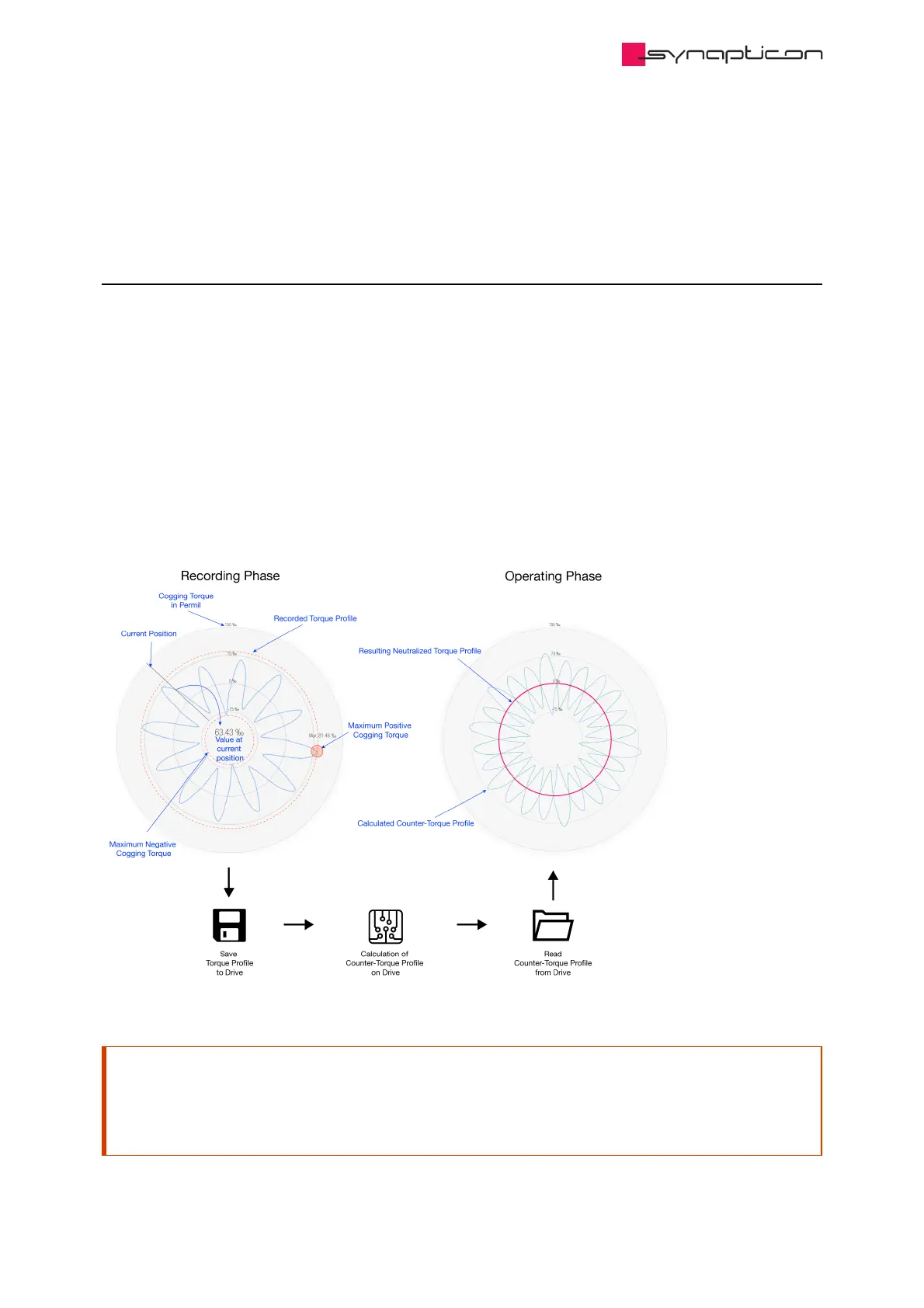3.1.8.3.1 Cogging Torque Compensation
3.1.8.3.1.1 Overview
Cogging is an effect caused by magnetic interaction between the motor rotor and the stator. It results in
torque ripples over the motor revolution, which leads to uneven motion or generally unsatisfying performance
of the motor at low velocities. This phenomenon is of particular concern in low-cost motor models but can be
compensated on a software level.
Cogging torque compensation is a software feature that suppresses torque ripple of electric motors to
overcome vibration problems in high precision and low velocity applications. It can be found in OBLAC Drives
When cogging torque compensation is activated, an additional torque component is generated actively by the
motor in order to compensate for the cogging torque. The compensation feature makes use of the fact that
cogging torque is dependent on the single-turn motor position. To find the amount of compensation torque
needed at each motor position, a recording procedure has to be performed before the compensation itself
can be used.
Attention
During the recording phase, the motor will do several turns at low velocities. Since cogging is a property
of the motor and independent of attached loads it’s possible to perform the procedure outside the
actual setup.
